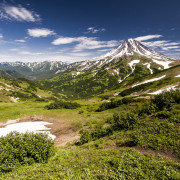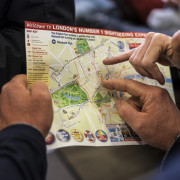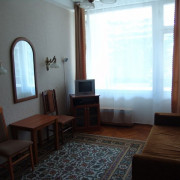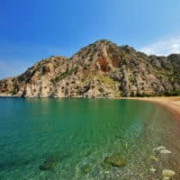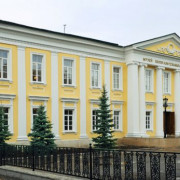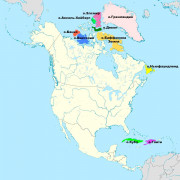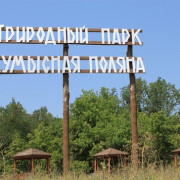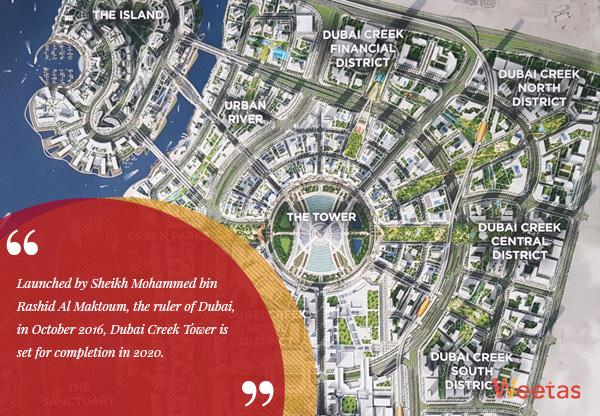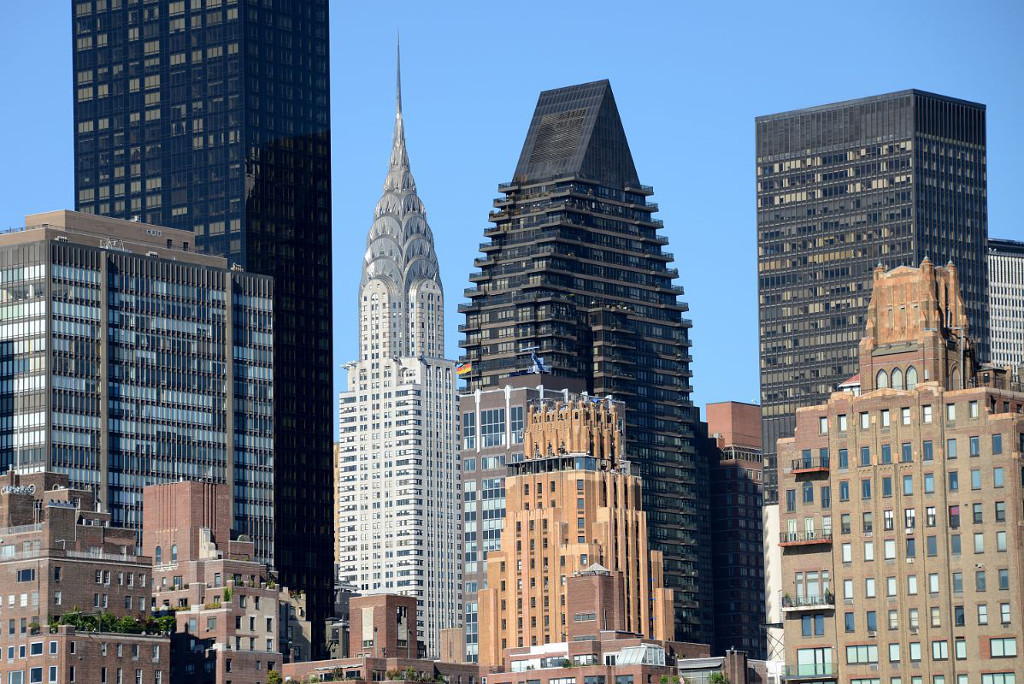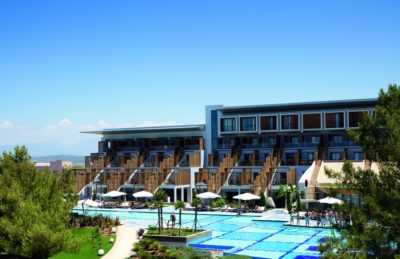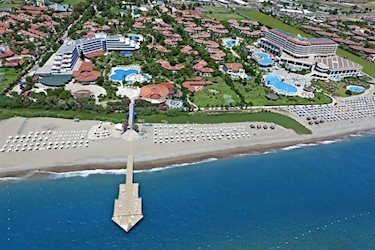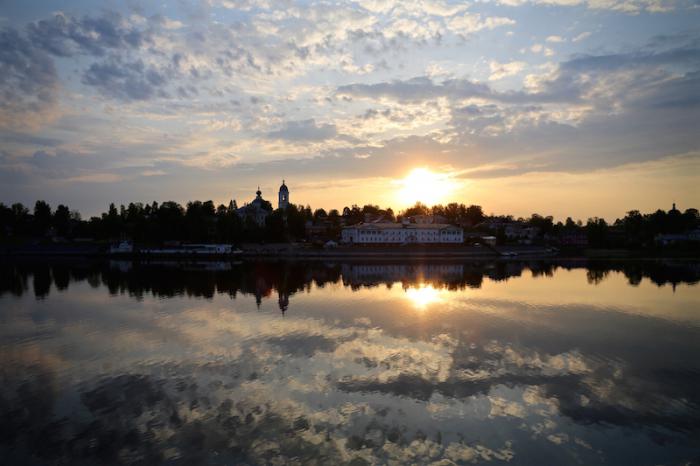Эмпайр-стейт-билдинг
Содержание:
- Background
- Параметры ===
- Архитектура здания
- The building was finished in record time.
- The Empire State Building Elevators
- Design features
- Similar skyscrapers
- An inflatable King Kong was attached to the Empire State Building for the film’s 50th anniversary—with mixed results.
- Its upper tower was originally designed as a mooring mast for airships.
- Использование как терминала для дирижаблей
- Смотровые площадки и архитектурные особенности
- Рекомендуем для туристов:
- The Race to the Sky
- Оne Vanderbilt (1 Вандербильт)
- Broadcast stations
- It was modeled after two earlier buildings.
- История небоскреба: проектирование и строительство
- Lots of Coordination
- Raising the Steel Skeleton of the Empire State Building
- Construction
- Смотровые площадки
- Происшествия
- There was a short-lived plan to add 11 floors to the Empire State Building.
- It was initially considered a financial flop.
Background
The present site of the Empire State Building was first developed as the John Thomson Farm in the late eighteenth century. The block was occupied by the original Waldorf Hotel in the late-nineteenth century and was frequented by the social elite of New York.
The Empire State Building was designed by the architectural firm Shreve, Lamb and Harmon, which produced the building drawings in just two weeks, possibly using its earlier design for the Carew Tower in Cincinnati, Ohio as a basis. The general contractors were Starrett Brothers and Eken, and the project was financed by John J. Raskob and Pierre S. DuPont. The construction company was chaired by Alfred E. Smith, a former Governor of New York.
Параметры ===
Архитектура
=== Архитектура
? здании 102 этажа, его высота — 381,3 метра. Вместе с
телевизионной башней, надстроенной в 50-е годы, он достигает общей
высоты 443 метра. Коммерческие площади занимают первые 85 этажей
здания (257 211 м²). Остальные 16 этажей — это надстройка в стиле
ар-деко, на 102 этаже которой расположена смотровая площадка.
Эмпайр-стейт-билдинг — первое здание в мире, имеющее более 100
этажей. В башне расположены 6500 окон и 73 лифта. Здание весит 331
000 тонн, построено на двухэтажном фундаменте и поддержано стальной
конструкцией весом в 54 400 тонн. На него пошло десять миллионов
кирпичей и 700 километров кабеля. Общая площадь окон — два гектара,
а площадь фундамента — более 8 тыс. м². Лестница насчитывает 1860
ступеней, где один раз в год проводится соревнование на скорейший
подъём. В офисных помещениях могут разместиться 15 000 человек, а
лифты способны за один час перевезти 10 000 человек. В башне
расположен около 1000 офисов, количество сотрудников составляет
21000 человек, что делает Эмпайр-стейт-билдинг вторым по числу
сотрудников зданием Америки после
Пентагона. Общая длина труб инфраструктуры достигает 113 км,
длина электрических проводов — 760 км. Отопление паровое низкого
давления. Для отделки были использованы известняковые плиты.
Поскольку небоскрёб окружён различными деловыми зданиями, то
снизу полностью не обозревается. Он выполнен в скромном, но
элегантном стиле Ар-деко. В отличие от большинства современных
небоскрёбов, фасад башни выполнен в классическом стиле. По серому
каменному фасаду ввысь тянутся полосы нержавеющей стали, а верхние
этажи расположены тремя уступами. Холл внутри имеет длину 30 метров
и высоту в три этажа. Он украшен панно с изображениями семи чудес
света, только к ним добавлено и восьмое: сам Эмпайр-стейт-билдинг.
В зале Рекордов Гиннеса собрана информация о необычных рекордах и
рекордсменах.
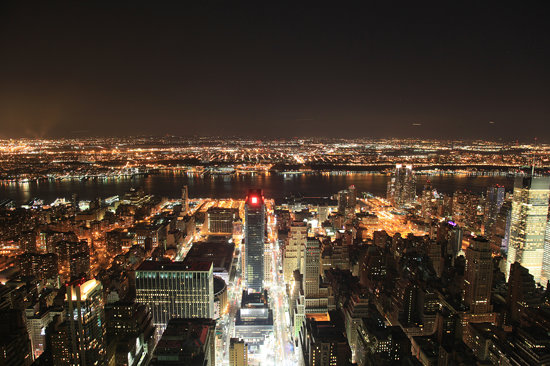
IMG_6474 — Fumitaket @ Flickr
Освещение
? 1964 году на башню была установлена система прожекторного
освещения для того, чтобы подсвечивать верхушку в цветовой гамме,
соответствующей каким-либо событиям, памятным датам или праздникам
(День святого Патрика,
Рождество и т. п.). К примеру, после восьмидесятилетнего юбилея
и последовавшей за ним смерти Фрэнка Синатры, подсветка здания была
выполнена в синих тонах, из-за прозвища певца «Мистер Голубые
глаза». После смерти актрисы Фэй Рэй в конце 2004 года, освещение
башни было полностью выключено на 15 минут.
Традиционно, в дополнение к обычному освещению, подсветка здания
выполняется в цветах нью-йоркских спортивных команд в те дни, когда
в городе проходят матчи этих команд (оранжевый, синий и белый для
New York Knicks, красный, белый и синий для New York Rangers и т.
д.). Во время Теннисного турнира US Open в подстветке доминирует
жёлтый цвет (цвет теннисного мяча). В июне 2002 года, в дни
празднования юбилея Её Величества Королевы Соединённого Королевства
Великобритании и Северной Ирландии Елизаветы II, подсветка была
пурпурно-золотой (цвета дома Виндзоров).
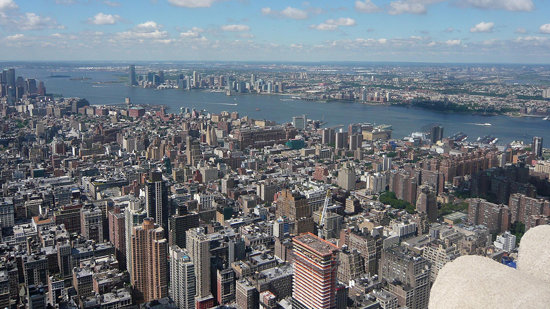
En el Empire State Building — fmorondo @ Flickr
Смотровые площадки
?мотровые площадки Эмпайр-стейт-билдинг являются одним из самых
популярных мест паломничества туристов в Нью-Йорке и одними из
самых посещаемых смотровых площадок в мире. Всего их посетило более
110 млн человек. Площадка на 86-м этаже имеет угол обзора в 360
градусов. Ещё одна смотровая площадка открыта на 102 этаже. В 1999
году она была закрыта, затем снова открыта в 2005 году. Верхняя
площадка полностью закрыта, её площадь намного меньше площади
нижней площадки. Из-за большого количества посетителей, верхняя
площадка закрывается в наиболее напряжённые дни. Туристы оплачивают
посещение смотровых площадок в кассе на 86 этаже (для посещения 102
этажа существует отдельная дополнительная оплата).
Аттракционы
?а втором этаже здания находится аттракцион, открытый в 1994
году для туристов. Аттракцион называется New York Skyride и
представляет собой имитатор воздушного путешествия по городу.
Длительность аттракциона — 25 минут.
С 1994 по 2002 год действовала старая версия аттракциона, в
которой Джеймс Духан, Скотти из сериала «Звёздный Путь», в качестве
пилота самолёта, в юмористическом стиле пытался сохранить контроль
над самолётом во время шторма. После теракта 11 сентября 2001 года,
этот аттракцион был закрыт. В новой версии сюжет остался прежним,
однако башни Всемирного торгового центра были убраны из декораций,
а пилотом вместо Духана стал Кевин Бейкон. Новая версия
преследовала прежде всего не развлекательные, а образовательные и
информационные цели. В неё также были включены патриотические
элементы.
Архитектура здания
Разработкой проекта, на который ушло всего 2 недели, занималась группа архитекторов из фирмы «Шрив, Лэм и Хармон». В конструкции здания они удачно совместили настроение общественности в период Великой депрессии и новые требования к городской застройке.
Небоскреб имеет ступенчатую форму, сужается кверху. Это одно из требований Закона о зонировании городской территории (1916 г.). Сужение верхних этажей должно было обеспечить хорошее освещение улиц.

Фасады лишены какого-либо декора и максимально упрощены, однако объект без сомнений относят к стилю ар-деко. Не последнюю роль в этом играет набор материалов — хромированной стали, пластмассы и стекла. Новая и смелая комбинация на тот период времени.
The building was finished in record time.
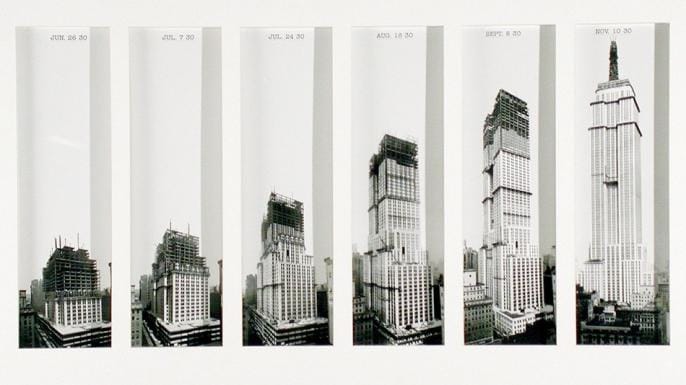
Construction of the Empire State Building (Credit: Daniel Ahmad/Wikimedia Commons)
Despite the colossal size of the project, the design, planning and construction of the Empire State Building took just 20 months from start to finish. After demolishing the Waldorf-Astoria hotel—the plot’s previous occupant—contractors Starrett Brothers and Eken used an assembly line process to erect the new skyscraper in a brisk 410 days. Using as many as 3,400 men each day, they assembled its skeleton at a record pace of four and a half stories per week—so fast that the first 30 stories were completed before certain details of the ground floor were finalized. The Empire State Building was eventually finished ahead of schedule and under budget, but it also came with a human cost: at least five workers were killed during the construction process.
The Empire State Building Elevators
Have you ever stood waiting in a ten — or even a six-story building for an elevator that seemed to take forever? Or have you ever gotten into an elevator and it took forever to get to your floor because the elevator had to stop at every floor to let someone on or off? The Empire State Building was going to have 102 floors and expected to have 15,000 people in the building. How would people get to the top floors without waiting hours for the elevator or climbing the stairs?
To help with this problem, the architects created seven banks of elevators, with each servicing a portion of the floors. For instance, Bank A serviced the third through seventh floors while Bank B serviced the seventh through 18th floors. This way, if you needed to get to the 65th floor, for example, you could take an elevator from Bank F and only have possible stops from the 55th floor to the 67th floor, rather than from the first floor to the 102nd.
Making the elevators faster was another solution. The Otis Elevator Company installed 58 passenger elevators and eight service elevators in the Empire State Building. Though these elevators could travel up to 1,200 feet per minute, the building code restricted the speed to only 700 feet per minute based on older models of elevators. The builders took a chance, installed the faster (and more expensive) elevators (running them at the slower speed) and hoped that the building code would soon change. A month after the Empire State Building was opened, the building code was changed to 1,200 feet per minute and the elevators in the Empire State Building were sped up.
Design features
Entrance lobby
Unlike most of today’s high-rise buildings, the Empire State Building features a classic facade. The modernistic, stainless-steel canopies of the entrances on Thirty-third and Thirty-forth Streets lead to two-story-high corridors around the elevator core, crossed by stainless steel and glass-enclosed bridges at the second floor level. The elevator core contains 67 elevators.
There are various setbacks in the building’s design, as required by New York City’s Zoning Resolution of 1916. The main purpose for the law was to reduce shadows cast by tall buildings. These setbacks give the building its unique tapered silhouette.
The lobby is three stories high and features an aluminum relief of the skyscraper without the antenna, which was not added to the spire until 1952. The north corridor contains eight illuminated panels, created by Roy Sparkia and Renée Nemorov in 1963, depicting the building as the Eighth Wonder of the World alongside the traditional seven.
Red and green floodlights during Christmas
Long-term forecasting of the life cycle of the structure was implemented at the design phase to ensure that the building’s future intended uses were not restricted by the requirements of future generations.
Floodlights illuminate the top of the building at night, in colors chosen to match seasonal and other events, such as Christmas and Independence Day. After the eightieth birthday and subsequent death of Frank Sinatra, for example, the building was bathed in blue light to represent the singer’s nickname «Ol’ Blue Eyes.»
The floodlights bathed the building in red, white, and blue for several months after the destruction of the World Trade Center, then reverted to the standard schedule. In June 2002, during the Golden Jubilee of Her Majesty Queen Elizabeth II of the United Kingdom, New York City illuminated the Empire State Building in purple and gold (the monarchical colors of the Royal House of Windsor). After the death of actress Fay Wray in late 2004, the building stood in complete darkness for 15 minutes in commemoration of her famous role in the movie King Kong, in which the building was prominently featured.
The Empire State Building has one of the most popular outdoor observatories in the world, having been visited by over 110 million people. The 86th floor observation deck offers impressive 360-degree views of the city. There is a second observation deck on the 102nd floor that is open to the public. It was closed in 1999, but reopened in November 2005. Completely enclosed and much smaller, it may be closed on high-traffic days.
Similar skyscrapers
Height comparison with the Burj Khalifa, Willis Tower, Taipei 101, and the Petronas Twin Towers
The Torre Latinoamericana in Mexico City very much resembles the Empire State Building, including setbacks and antenna. The main differences are the size and outer paneling—the Torre Latinoamericana is glass-paneled on the outside. Also of similar design are the Seven Sisters in Moscow (such as the main building of Moscow State University) and the Palace of Culture and Science in Warsaw, Poland. The Williams Tower in Houston is a glass-architecture version of the design, and the entrance on the ground floor is very similar.
The Reynolds Building, headquarters for the R.J. Reynolds Tobacco Company in Winston-Salem, North Carolina is said to be the prototype for the Empire State Building. The Carew Tower in Cincinnati, is also thought to be the basis of the tower, due to the similar design by the same architectural firm, Shreve, Lamb and Harmon Associates. Another tower thought to be an inspiration for the Empire State Building is the Penobscot Building in Detroit, Michigan, completed in 1928.
An inflatable King Kong was attached to the Empire State Building for the film’s 50th anniversary—with mixed results.
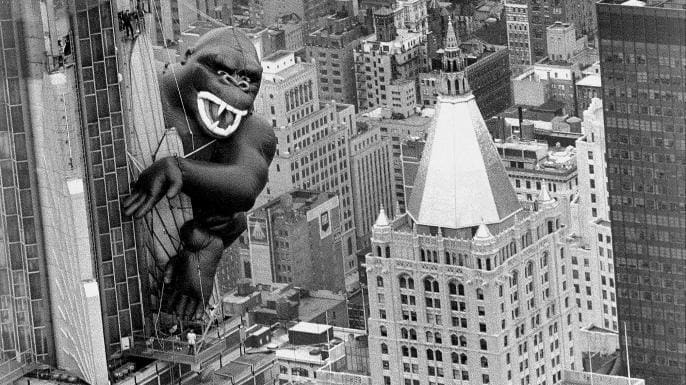
Inflatable King Kong on the Empire State Building. (Credit: Harry Hamburg/NY Daily News Archive via Getty Images)
Of the more than 90 movies featuring the Empire State Building, none is more famous than 1933’s “King Kong,” which ends with the titular giant ape scaling the skyscraper and being attacked by swarming biplanes. The original scene was shot in a studio, but for the film’s 50th anniversary in April 1983, a balloon company president tried to recreate it by attaching a inflatable King Kong to the Empire State’s mooring mast. Unfortunately, the $150,000 stunt didn’t go as planned. The 84-foot Kong balloon suffered a tear while being inflated, ruining a plan to have it buzzed by vintage aircraft. It was finally inflated a few days later, but it only stayed on the building for a short time before another rip forced the project to be scrapped altogether.
Its upper tower was originally designed as a mooring mast for airships.
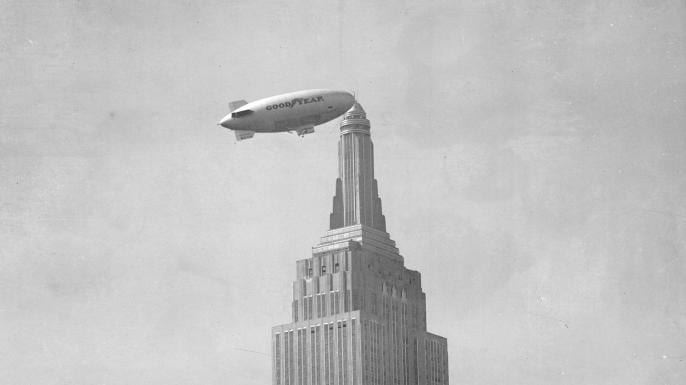
Blimp near the mooring mast. (Credit: New York Daily News Archive / Contributor)
By far the most unusual aspect of the Empire State Building’s design concerned its 200-foot tower. Convinced that transatlantic airship travel was the wave of the future, the building’s owners originally constructed the mast as a docking port for lighter-than-air dirigibles. The harebrained scheme called for the airships to maneuver alongside the building and tether themselves to a winching apparatus. Passengers would then exit via an open-air gangplank, check in at a customs office and make their way to the streets of Manhattan in a mere seven minutes. Despite early enthusiasm for the project, the high winds near the building’s rooftop proved all but impossible for pilots to negotiate. The closest thing to a “landing” came in September 1931, when a small dirigible tethered itself to the spire for a few minutes. Two weeks later, a Goodyear blimp dropped a stack of newspapers on the roof a part of a publicity stunt, but the airship plan was abandoned shortly thereafter.
Использование как терминала для дирижаблей
В начале эксплуатации здания его шпиль задумывалось использовать в качестве причальной мачты для дирижаблей. 102-й этаж был причальной платформой со сходнями для подъёма на дирижабль. Специальный лифт, курсирующий между 86-м и 102-м этажами, мог использоваться для транспортировки пассажиров. Регистрация, по задумке, производилась на 86 этаже. Однако идея воздушного терминала была признана несостоятельной ввиду соображений безопасности (сильные и нестабильные воздушные потоки наверху здания делали причаливание очень сложным, и после первой попытки стало понятно, что эта идея утопична). Ни один цеппелин так и не причалил к зданию. В 1952 году на месте терминала было размещено телекоммуникационное оборудование.
Смотровые площадки и архитектурные особенности
Высота небоскрёба составляет 381 метр по крыше, и почти 444 метра включая шпиль с размером в 62 м. Всего в здании находиться 103 этажа, которые занимают около 250 тыс. квадратных метров. Самый верхний этаж расположен на высоте 373,1 м.
На 86 и 102 этажах располагаются смотровые площадки, на которые может попасть любой желающий. Имеется скрытая от обычных посетителей смотровая терраса на самом высоком, 103, этаже. На уровень 380 метров пускают лишь «ВИП-персон»: глав стран, поп и кинозвёзд, знаменитых спортсменов, политических деятелей. Хотя даже им требуется подавать специальный запрос на посещение площадки. Но всё-таки оно такого стоит: здесь достаточно маленький балкон, нет отгораживающей сетки, потрясающий вид.
Ежегодно, 14 февраля, на 80 этаже проводятся многочисленные свадьбы. Пары получают бесплатные билеты на смотровую площадку и становятся членами «Свадебного клуба».
На первых 85 этажах располагаются офисы. Именно из-за их большого количества ЭСБ имеет свой собственный индекс — 10118. На остальных же 16 надстройка в стиле ар-деко, которая представляет собой смесь модернизма и неоклассицизма. Так же в здании находится сувенирная лавка. Вы можете посетить экскурсию, где вам расскажут про историю строительства ЭСБ. Ежедневно небоскрёб посещают более тысячи человек.
Рекомендуем для туристов:
✓Tripster — крупнейший сервис онлайн-бронирования экскурсий в России.
✓Travelata.ru — поиск самых выгодных туров среди 120 надежных туроператоров.
✓Aviasales.ru — поиск и сравнение цен на авиабилеты среди 100 агентств и 728 авиакомпаний.
✓Hotellook.ru — поисковик отелей по всему миру. Сравнивает цены по многим системам бронирования, находя лучшее.
✓Airbnb.ru — самый популярный в мире сервис аренды жилья от хозяев (часто это выходит удобней и дешевле отеля). Перейдите по этой ссылке и получите в подарок на первое бронирование – 25$.
✓Сравни.ру — туристическая страховка онлайн, в том числе для визы.
✓Kiwitaxi.ru — международный сервис бронирования автомобильных трансферов. 70 стран и 400 аэропортов.
The Race to the Sky
When the Eiffel Tower (984 feet) was built in 1889 in Paris, it taunted American architects to build something taller. By the early twentieth century, a skyscraper race was on. By 1909 the Metropolitan Life Tower rose 700 feet (50 stories), quickly followed by the Woolworth Building in 1913 at 792 feet (57 stories), and soon surpassed by the Bank of Manhattan Building in 1929 at 927 feet (71 stories).
When John Jakob Raskob (previously a vice president of General Motors) decided to join in the skyscraper race, Walter Chrysler (founder of the Chrysler Corporation) was constructing a monumental building, the height of which he was keeping secret until the building’s completion. Not knowing exactly what height he had to beat, Raskob started construction on his own building.
In 1929, Raskob and his partners bought a parcel of property at 34th Street and Fifth Avenue for their new skyscraper. On this property sat the glamorous Waldorf-Astoria Hotel. Since the property on which the hotel was located had become extremely valuable, the owners of the Waldorf-Astoria Hotel decided to sell the property and build a new hotel on Park Avenue (between 49th and 50th Streets). Raskob was able to purchase the site for approximately $16 million.
Оne Vanderbilt (1 Вандербильт)
Высота:427 м.
Открытие: 2020 г.
Количество этажей: 58
Стоимость: 3,31 миллиарда дол.
Культовый небоскреб является самой высокой офисной башней в центре Манхэттена. Здание предлагает комфортабельный набор удобств, инновационный дизайн офисного пространства. Он состоит из четырёх взаимосвязанных и сужающихся плоскостей, спирально уходящих в небо. У основания башни ряд угловых вырезов на южной стороне квартала создаёт визуальное стремление к Центральному вокзалу, открывающее угол Вандербильт-авеню с видом на великолепный карниз вокзала.
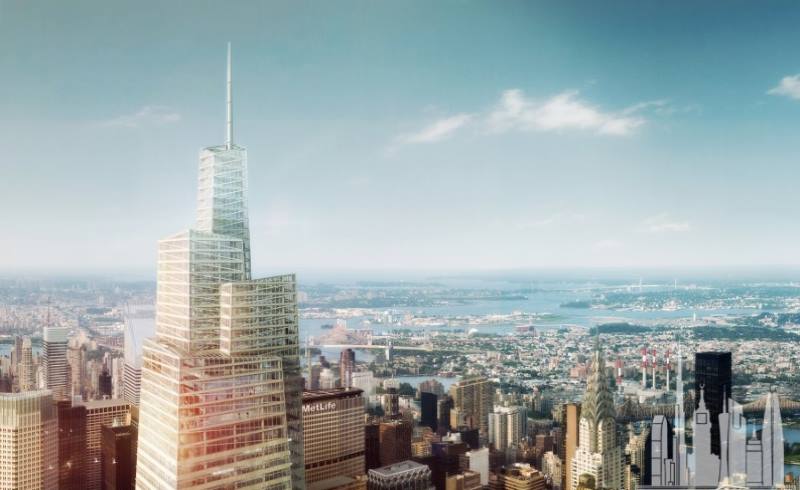
Арендаторами почти на 70 % площадей стали одни из ведущих финансовых, банковских, юридических фирм и компаний по недвижимости. В число арендаторов входят TD Securities, ведущая банковская и инвестиционная компания, предоставляющая широкий спектр продуктов и услуг для рынков капитала, и TD Bank, самый удобный банк Америки, входящий в десятку крупнейших банков США; частные инвестиционные компании The Carlyle Group, KPS Capital Partners, Oak Hill Advisors, InTandem Capital, SageWind Capital и Sentinel Capital Partners; престижные юридические фирмы Greenberg Traurig и McDermott Will & Emery; глобальная немецкая финансовая компания DZ Bank; публичный инвестиционный фонд недвижимости MFA Financial Inc. и корпорация SL Green Realty Corp.
На втором этаже в юго-восточном углу планируется огромный ресторан, расположенный напротив Центрального вокзала и видом на Крайслер-билдинг. А на верху вторая по высоте смотровая площадка.
Адрес: 1 Vanderbilt Ave, New York, NY 10017, Соединенные Штаты
Broadcast stations
Communications devices of all sorts adorn the very top of the building.
New York City is the largest media market in the United States. Since the September 11, 2001 attacks, nearly all of the city’s commercial broadcast stations (both television and radio) have transmitted from the top of the Empire State Building, although a few stations are located at the nearby Condé Nast Building.
Broadcasting began at Empire in the late 1930s, when RCA leased the 85th floor and built a laboratory there for Edwin Howard Armstrong. When Armstrong and RCA terminated their relationship, the 85th floor became the home of RCA’s New York television operations, first as an experimental station and eventually as a commercial station WNBT, channel 4 (now WNBC-TV). Other television broadcasters would join RCA at Empire, on the 83rd, 82nd, and 81st floors, frequently bringing sister FM stations with them.
When the World Trade Center was being constructed, it interfered with broadcast signals and caused serious problems for the television stations, most of which moved to the WTC as soon as it was completed. This made it possible to renovate the antenna structure and the transmitter facilities for the benefit of the FM stations remaining there, which were soon joined by other FMs and UHF TVs moving in from elsewhere in the metropolitan area. The destruction of the World Trade Center necessitated a great deal of shuffling of antennas and transmitter rooms in order to accommodate the stations moving back into the ESB.
It was modeled after two earlier buildings.
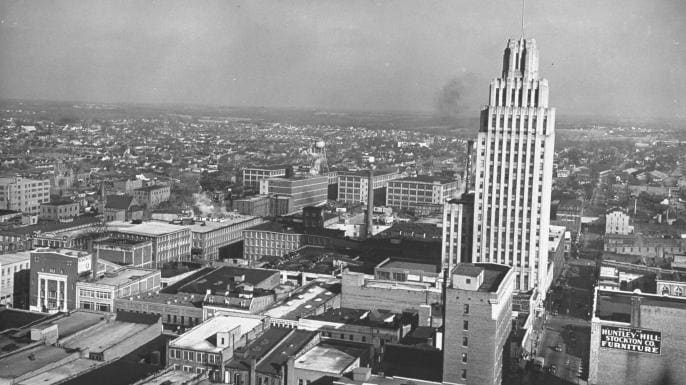
North Carolina’s Reynolds Building. (Credit: Gabriel Benzur/The LIFE Images Collection/Getty Images)
When he drew up its plans in 1929, architect William Lamb of the firm Shreve, Lamb and Harmon is said to have modeled the Empire State Building after Winston-Salem, North Carolina’s Reynolds Building—which he had previously designed—and Carew Tower in Cincinnati. The two earlier Art Deco buildings are now often cited as the Empire State’s architectural ancestors. On the Reynolds Building’s 50th anniversary in 1979, the Empire State Building’s general manager even sent a card that read, “Happy Anniversary, Dad.”
История небоскреба: проектирование и строительство
Заглянув в историю, мы узнаем, что проектом здания занялась архитектурная компания «Шрив, Лэмб и Хармон», главным архитектором которой был Уилльям Ф. Лэмб.
При проектировании использовались ранние разработки для небоскребов Рейнольдс Билдинг в Северной Каролине и Керью Тауэр в штате Огайо.
Строительство башни стартовало в День святого Патрика – 17 марта 1930 года, и завершилось спустя 1 год и 45 дней, всего на сооружение небоскреба потребовалось более 7 миллионов человеко-часов.
Над постройкой здания трудились 3400 рабочих: большая часть – эмигранты из Европы, а также несколько сотен монтажников – выходцев из индейского племени томогавков, отличительной чертой которых было отсутствие боязни высоты.
На момент начала строительства ЭСБ будущие символы Нью-Йорка – Трамп Билдинг и Крайслер Билдинг – претендовали на титул высочайшего небоскреба в кратчайшие сроки и уже находились в процессе стройки.
Между ними разгорелась нешуточная борьба, в результате которой ЭСБ обогнал всех: здание росло на четыре с половиной этажа в неделю, рекорд – четырнадцать этажей за десять дней.
Так, спустя 410 дней, 5662 м3 стройматериалов, 60 тысяч тонн стальных конструкций, 10 млн кирпичей и 700 км кабеля, на горизонте Манхэттена появилось высочайшее на тот момент здание в мире.
Lots of Coordination
The construction of the rest of the Empire State Building was a model of efficiency. A railway was built at the construction site to move materials quickly. Since each railway car (a cart pushed by people) held eight times more than a wheelbarrow, the materials were moved with less effort.
The builders innovated in ways that saved time, money, and manpower. Instead of having the ten million bricks needed for construction dumped in the street as was usual for construction, Starrett had trucks dump the bricks down a chute which led to a hopper in the basement. When needed, the bricks would be released from the hopper, thus dropped into carts which were hoisted up to the appropriate floor. This process eliminated the need to close down streets for brick storage as well as eliminated much back-breaking labor of moving the bricks from the pile to the bricklayer via wheelbarrows.9
While the outside of the building was being constructed, electricians and plumbers began installing the internal necessities of the building. The timing for each trade to start working was finely tuned. As Richmond Shreve described:
Raising the Steel Skeleton of the Empire State Building
The steel skeleton was built next, with work beginning on March 17, 1930. Two-hundred and ten steel columns made up the vertical frame. Twelve of these ran the entire height of the building (not including the mooring mast). Other sections ranged from six to eight stories in length. The steel girders could not be raised more than 30 stories at a time, so several large cranes (derricks) were used to pass the girders up to the higher floors.
Passersby would stop to gaze upward at the workers as they placed the girders together. Often, crowds formed to watch the work. Harold Butcher, a correspondent for London’s Daily Herald described the workers as right there «in the flesh, outwardly prosaic, incredibly nonchalant, crawling, climbing, walking, swinging, swooping on gigantic steel frames.»7
The riveters were just as fascinating to watch, if not more so. They worked in teams of four: the heater (passer), the catcher, the bucker-up, and the gunman. The heater placed about ten rivets into the fiery forge. Then once they were red-hot, he would use a pair of three-foot tongs to take out a rivet and toss it — often 50 to 75 feet — to the catcher. The catcher used an old paint can (some had started to use a new catching can made specifically for the purpose) to catch the still red-hot rivet. With the catcher’s other hand, he would use tongs to remove the rivet from the can, knock it against a beam to remove any cinders, then place the rivet into one of the holes in a beam. The bucker-up would support the rivet while the gunman would hit the head of the rivet with a riveting hammer (powered by compressed air), shoving the rivet into the girder where it would fuse together. These men worked all the way from the bottom floor to the 102nd floor, over a thousand feet up.
When the workers finished placing the steel, a massive cheer rose up with hats waiving and a flag raised. The very last rivet was ceremoniously placed — it was solid gold.
Construction
Worker bolting beams during construction.
Excavation of the site began on January 22, 1930, and construction on the building itself started on March 17. The project involved 3400 workers, mostly immigrants from Europe, along with hundreds of Mohawk Nation iron workers. According to official accounts, five workers died during the construction.
The construction was part of an intense competition in New York for the title of the world’s tallest building. Two other projects vying for the title, 40 Wall Street and the Chrysler Building, were still under construction when work began on the Empire State Building. Both would hold the title for less than a year, as the Empire State Building had surpassed them upon its completion, just 410 days after construction commenced. The building was officially opened on May 1, 1931 in dramatic fashion, when United States President Herbert Hoover turned on the building’s lights with the push of a button from Washington, D.C..
A series of setbacks causes the building to taper off with height.
The Empire State Building rises to 1,250 feet at the one-hundred-and-second floor, and its full structural height (including broadcast antenna) reaches 1,453 feet and eight and nine-sixteenth inches. The building is typically described as being 102 stories tall, although it has only 85 stories of commercial and office space (2,158,000 square feet), with an observation deck on the 86th floor. The remaining 16 stories represent the spire, which supports the broadcast antenna on top. The Empire State Building is the first building to have more than 100 floors. The building weighs approximately 330,000 metric tons. It has 6,500 windows, 73 elevators, 1,860 steps to the top floor, and a total floor area of 2,200,000 square feet.
Did you know?
The Empire State Building remained the tallest skyscraper in the world for over 40 years
The Empire State Building remained the tallest skyscraper in the world for a record 41 years and stood as the world’s tallest man-made structure for 23 years.
Смотровые площадки
Основная смотровая площадка
На 86 этаже небоскреба действует высочайшая смотровая площадка под открытым небом в Нью-Йорке. Здесь были сняты десятки киносцен, пережиты миллионы незабываемых моментов.
Для справки! Площадка располагается вокруг шпиля здания, представляя взору посетителей панораму Нью-Йорка и его окрестностей. Отсюда открываются захватывающие виды на Центральный парк, реку Гудзон, пролив Ист-Ривер, Бруклинский мост, Таймс-сквер, статую Свободы и многое другое.
Можно также воспользоваться обзорным биноклем с многократным увеличением и рассмотреть объекты в мельчайших подробностях.
Верхняя смотровая площадка
Шестнадцатью этажами выше – на 102 этаже здания – действует ещё одна смотровая площадка, по площади значительно уступающая основной, к тому же полностью закрытая.
Происшествия
Столкновение самолёта
Остатки бомбардировщика на фасаде небоскреба
28 июля 1945 года бомбардировщик ВВС США B-25 «Митчелл», пилотируемый в густом тумане подполковником Уильямом Смитом, столкнулся со зданием между 79 и 80-м этажами. Один из двигателей пробил башню насквозь и упал на соседнее здание, другой свалился в шахту лифта. Пожар, возникший в результате столкновения, был потушен уже через 40 минут. В инциденте погибло 14 человек. Лифтёр Бетти Лу Оливер выжила после падения в лифте с высоты 75 этажа — это достижение попало в Книгу Гиннесса. Несмотря на это происшествие, здание не было закрыто, и работа в большинстве офисов на следующий рабочий день не остановилась.
Самоубийства
Со времени открытия здания было совершено более тридцати самоубийств. Первым спрыгнул сразу после завершения строительства недавно уволенный рабочий. В 1947 году, после пяти попыток суицида всего за три недели, вокруг наблюдательной площадки было возведено ограждение. Одной из самоубийц была 23-летняя Эвелин Макхейл. В 1979 году Элвита Адамс решила свести счёты с жизнью и прыгнула с 86-го этажа, но сильный ветер забросил её на 85-й этаж, и она отделалась только переломом бедра. Одно из последних самоубийств произошло 13 апреля 2007 года, когда с 69-го этажа выбросился разорившийся адвокат.
There was a short-lived plan to add 11 floors to the Empire State Building.
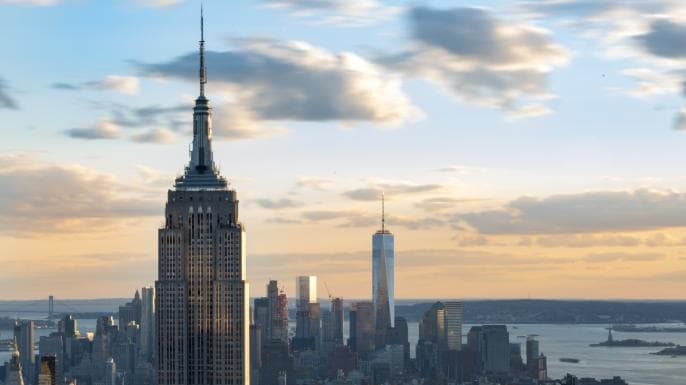
Credit: Roberto Machado Noa/LightRocket via Getty Images
Shortly after the World Trade Center towers were erected in the early 1970s, an architect at the firm Shreve, Lamb and Harmon concocted a scheme that would allow the Empire State Building to keep its crown as the world’s tallest skyscraper. The proposed plan called for the building’s 16-story tower to be demolished and replaced by a new top section that would increase its height to 113 stories and 1,495 feet. If completed, the renovation would have made the Empire Building taller than both the World Trade Center and the Sears Tower—which was then under construction—but the idea was quickly dropped due to cost concerns and complaints that it would destroy the building’s iconic look.
It was initially considered a financial flop.
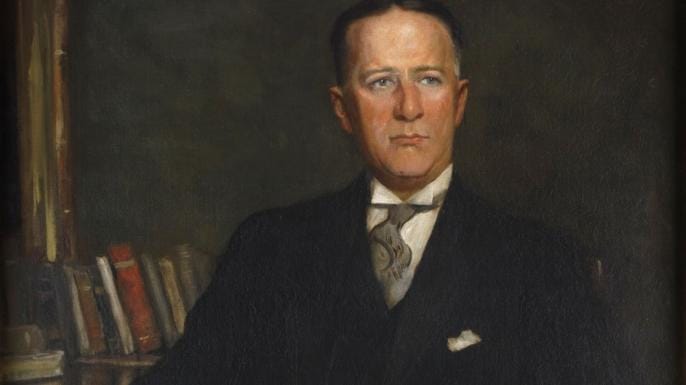
Former NY gov. Al Smith, who served as the building’s first president.
The Empire State Building was primarily designed to house corporate offices, but it got off to a rocky start thanks to the 1929 stock market crash and the onset of the Great Depression. Less than 25 percent of the building’s retail space was occupied upon its opening in 1931, earning it the nickname the “Empty State Building.” The building’s owners were reduced to engineering publicity stunts to draw renters—including hosting a 1932 séance that tried to contact the ghost of Thomas Edison from the 82nd floor—but the skyscraper’s upper half remained almost entirely vacant for most of the 1930s. At times, workers were even told to turn on lights on the higher floors to create the illusion that they were occupied. It wasn’t until World War II that the building finally became profitable.
